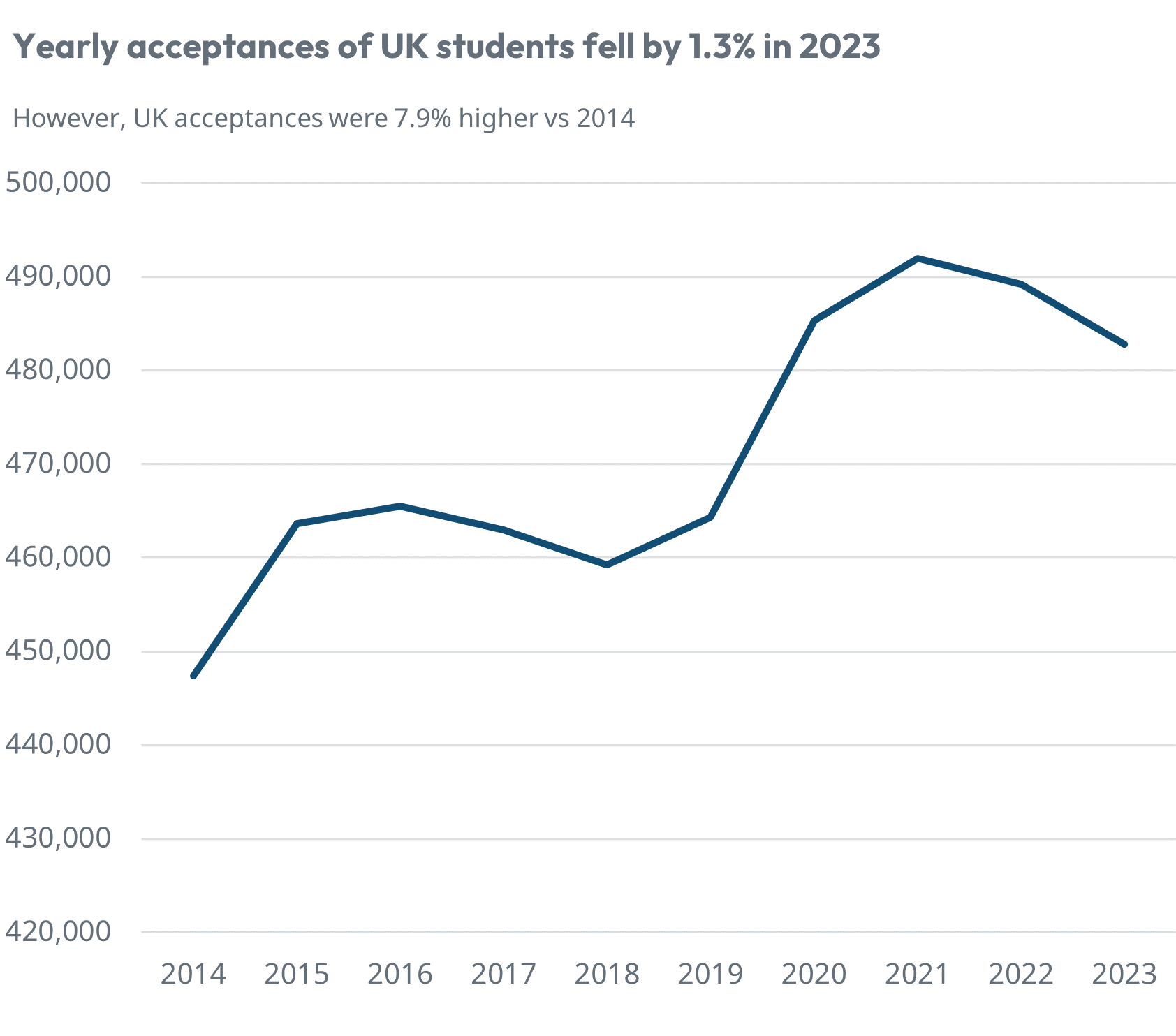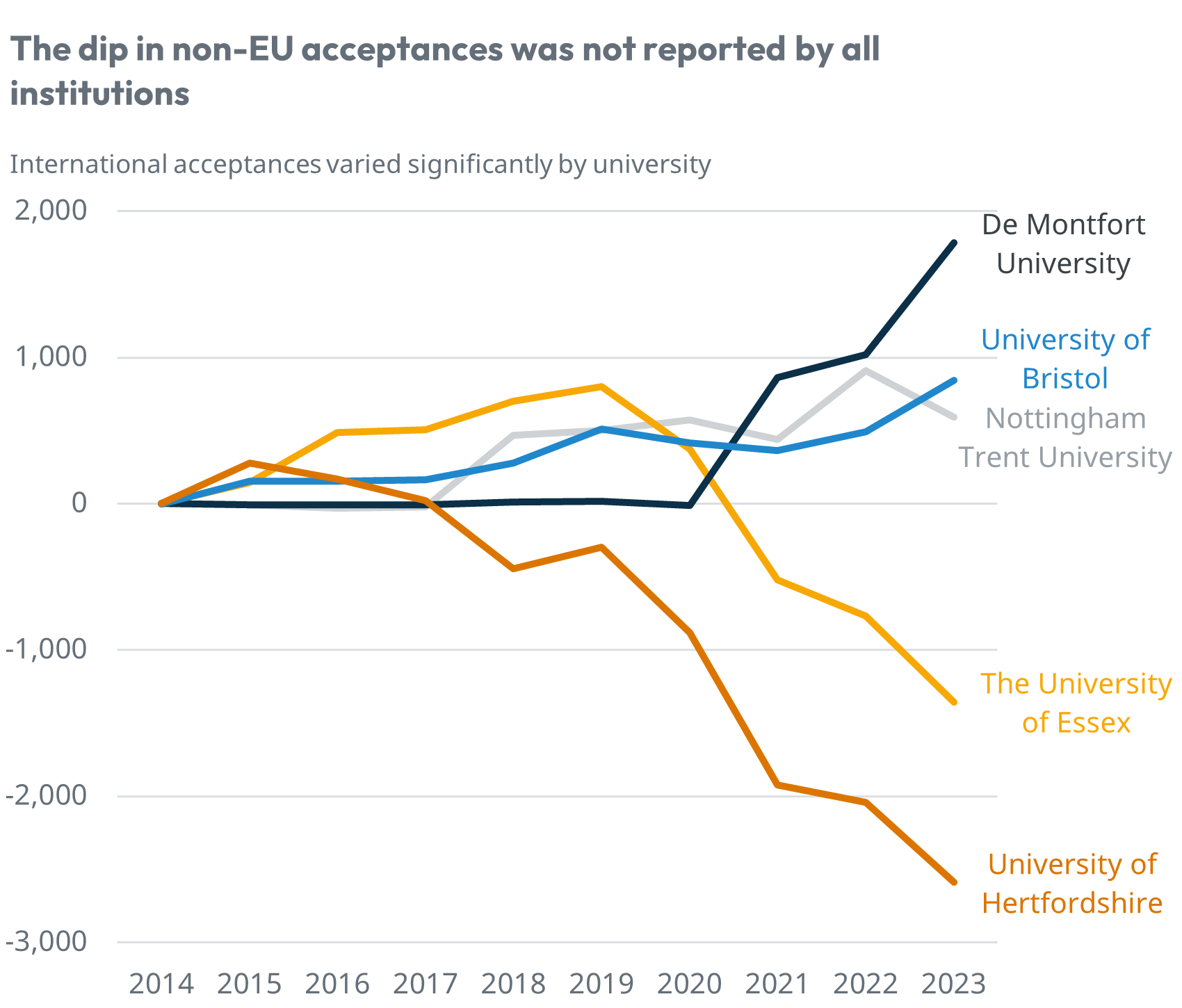
Student Accommodation Research: Q1 Demand Growth

Q1 Demand Growth
The StuRents Q1 Quarterly Reports are now available!
Every quarter, the research team at StuRents compiles reports for 46 university cities and towns across the UK, plus a national report for the UK. In Q1, a key section of the reports explores demand growth by demographic, as revealed by this year's end-of-cycle statistics from UCAS.
UK Demand
Source: UCAS, StuRents Limited
The chart shows the total yearly acceptances of domestic students to UK universities since 2014.
This year we saw a decline of 1.3% in acceptances but numbers were still up by 4.0% compared to pre-COVID levels.
International Demand
Source: UCAS, StuRents Limited
The chart shows the yearly acceptances of international students to UK institutions, split into EU and non-EU students.
Similar to what was reported in domestic figures, non-EU numbers fell in the most recent year by 2.4%. However, non-EU total acceptances are still up by 35% compared to 2019.
Brexit continued to have an effect. EU numbers continued to fall, albeit the rate of decline is slowing.
China and India
Source: UCAS, StuRents Limited
The chart shows the yearly acceptances of Chinese and Indian students into UK universities.
In 2023, Chinese UCAS acceptances fell by 5.9%. However, the long-term trend in Chinese figures is positive, with total acceptances up 40% since 2019.
Indian acceptances continue to increase, rising by 3.0% year-on-year and up by 317% since 2014.
Non-EU Growth by Institution
Source: UCAS, StuRents Limited
The chart shows the year acceptances of non-EU students to select universities of interest. The variation shown between institutions is a good example of the importance of understanding city-level nuances rather than taking national figures as an indicator in individual circumstances.
Against the national trend, the University of Bristol saw numbers jump by 31.8% or 355 students in 2023, equally De Montford reported growth of 67.1% or 765 students.
Meanwhile, other institutions such as Nottingham Trent reported higher levels of volatility in their non-EU figures. Year-on-year, there was a significant decline of 29.6%, however, the long-term trend remained positive.
Conversely, the University of Essex and the University of Hertfordshire were among the group of universities that have reported long term declines in international student numbers. University of Hertfordshire has seen numbers drop 48% since 2014, equivalent to 2.5k fewer students. However, there is further nuance to these figures. Whilst totals could be falling, some may be seeing growth in Chinese numbers, so there could still be possible opportunities for certain product types.
StuRents' Quarters
Recently our Head of Research, Richard Ward, was joined by Brodie Berman, Senior Acquisitions Associate at Fusion Group, and TONG Partner & Client Services Director, Gabriel Nicklin. The three discuss key trends in the student accommodation sector. Based on research from our quarterly reports and our unique, proprietary data, they explore:
- Demand growth per demographic, as revealed by this year's end-of-cycle statistics from UCAS, as described above.
- Changing student search behaviour and the price points students have been considering. Read more.
- Updates to market supply and the supply pipeline. Read more.
- Booking velocity across key market locations.Read more.
We also asked our audience for their thoughts on some interesting market developments, the results of which can be viewed here.
A recording of the webinar is available to view here.
Share





